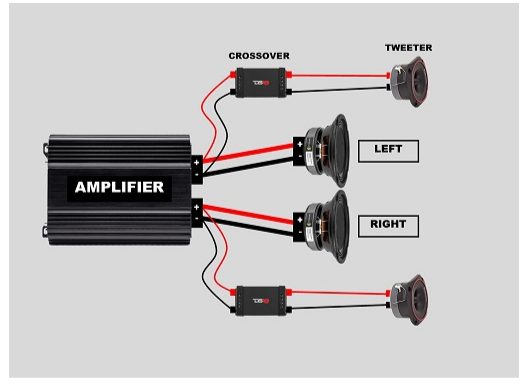When it comes to crafting the perfect audio experience, aficionados often wonder about the intricacies of connecting audio components. A prevalent inquiry is whether one can connect tweeters directly to an amplifier. This seemingly straightforward question opens the door to a labyrinth of technical considerations, nuances of sound quality, and personal preferences. Let’s dive deeper into the fascinating world of audio setups and explore the reasons behind this frequent deliberation.
To understand the feasibility of connecting tweeters to an amplifier, one must first appreciate the distinct roles that different audio components play. In a typical audio system, the amplifier serves as the powerhouse, driving various speakers and ensuring they produce sound effectively. Tweeters, on the other hand, are specialized speakers designed specifically to reproduce high-frequency sounds, typically ranging from 2,000 Hz up to 20 kHz or even higher.
But why does this division of labor matter? The answer lies in how amplifiers and tweeters are engineered. Tweeters are often more sensitive to power and frequency than their bass-heavy counterparts, such as woofers. This means that they require less power to produce sound at higher frequencies. However, directly connecting a tweeter to an amplifier can lead to several potential issues that can compromise audio quality and even damage the components involved.
One significant concern with directly connecting tweeters to an amplifier is impedance mismatch. Most amplifiers are designed to work with speakers that have a certain nominal impedance, typically measured in ohms. Tweeters usually present a higher impedance, which could lead the amplifier to underdeliver power. This impedance mismatch can cause distortion or a lack of clarity in sound reproduction. Ultimately, this mismatch alters the balance of your audio setup and affects the overall listening experience.
Additionally, the use of a crossover network is an integral part of audio setups. Crossovers are devices that divide the audio signal into different frequency ranges and send them to the appropriate speakers. A high-pass crossover filter is typically employed for tweeters to prevent them from receiving low-frequencies that they cannot adequately reproduce. If you connect tweeters directly to an amplifier without this crucial component, the risk of damaging the tweeters increases substantially. Sending low-frequency signals to a tweeter can push it beyond its limits, leading to distortion or even complete failure.
Furthermore, understanding the type and size of the amplifier is critical when considering connectivity. Not all amplifiers are created equal; some may offer a more refined output that can handle tweeters directly, while others may not. Moreover, while it is technically feasible to connect tweeters to an amplifier, using a dedicated crossover or specialized tweeter amplifier often yields better audio clarity and overall performance. This approach ensures that each speaker receives the frequencies it was designed to handle, leading to an optimal listening experience.
It’s worth mentioning that audiophiles value subtleties in sound reproduction. The allure of connecting tweeters directly to an amplifier might stem from a desire for simplicity or a quest for ultimate control over the audio signal. However, enthusiasts often discover that the complexity of a well-thought-out audio system is what brings about true sonic artistry. This revelation hints at a deeper fascination with audio engineering—an appreciation for how each component interacts harmoniously to create an immersive soundscape.
Another common observation is the trend of DIY audio setups. Many enthusiasts enjoy experimenting with their systems, often leading them to explore unconventional connections, such as directly wiring tweeters to amplifiers. This can result in unexpected auditory experiences. However, caution is paramount, as the thrill of experimentation should always be balanced with an understanding of the potential risks involved. Sound quality should never be sacrificed at the altar of curiosity.
As technology evolves, so too do the methods of connecting audio components. With advances in digital signal processing and the emergence of integrated amplifiers with sophisticated internal crossovers, the landscape of audio setup continues to shift. These modern devices can offer refined control, allowing for the direct connection of tweeters with built-in protections against damaging frequencies. As these technologies progress, they deepen our understanding of sound and engagement with music.
In conclusion, while the idea of connecting tweeters directly to an amplifier is tempting for its simplicity and immediacy, it comes laden with technical challenges. Impedance mismatches, the necessity of crossovers, and the specific requirements of audio components present compelling arguments for a more considered approach. This intricate interplay between pieces creates a richer, more fulfilling audio experience—one that resonates deeply with those who appreciate music in all its forms. The devotion to achieving the perfect sound is not merely about functionality; it is about the journey of discovery, the pursuit of innovation, and the joy of hearing every resonant note as it was meant to be experienced.
